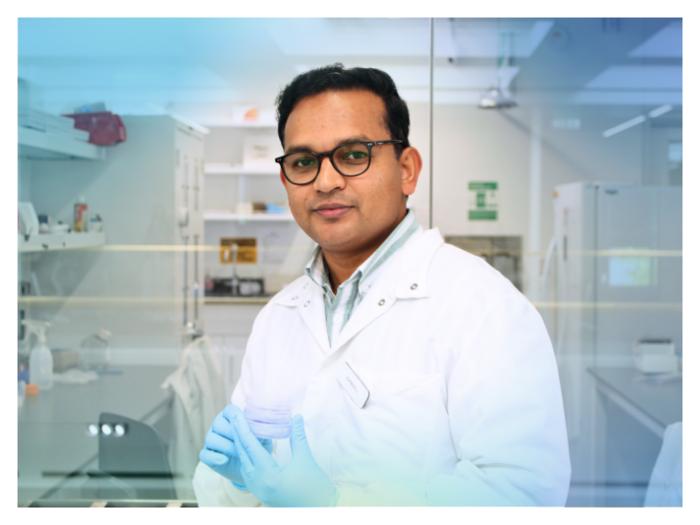Researchers at the Terasaki Institute for Biomedical Innovation (TIBI) are making strides in the field of tissue engineering with an innovative light-based 3D printing technique that offers precise control over cellular arrangement. Their groundbreaking study, published in the prestigious scientific journal Small, demonstrates the ability to create microgels with structured internal architectures that closely mirror the natural organization of human tissues. This advancement represents a significant leap forward in developing functional tissue substitutes that could play an essential role in regenerative medicine.
The innovative approach involves the manipulation of light to interact with hydrogels, a versatile material often used in 3D bioprinting. By refining the properties of light, the researchers succeeded in altering the internal structure of these hydrogels to guide the behavior and growth patterns of cells embedded within. This cutting-edge method addresses long-standing challenges in recapitulating the complex environments of human tissues, paving the way for more effective therapies aimed at repairing damaged organs and tissues.
The applications of these microgels are manifold, as shown in experiments where muscle cells were integrated into rod-shaped gels. This configuration not only aided the alignment of muscle cells but also encouraged the formation of muscle fibers. Such progress is particularly encouraging for developing injectable treatments aimed at repairing muscle injuries, which could potentially transform rehabilitation processes for patients with muscle damage.
Furthermore, the research team demonstrated the versatility of their microgels by utilizing them to hold photoreceptor cells, which autonomously organized into structures resembling the outer layers of the retina. This discovery has sweeping implications for future therapies targeting retinal diseases that impact vision, showcasing how the aligning of cells can lead to functionalities traditionally found in biological tissues. The integration of angiogenic peptides within these microgels further promotes the development of new blood vessels, thereby enhancing both in vitro and in vivo tissue engineering outcomes.
Key to the success of this research is the ability of the microgels to retain their form during the injection process. This stability ensures that the materials can effectively support not only cell growth but also facilitate new blood vessel formation, which is critical for tissue development and repair. The flexible design framework of these microgels allows for customization across various clinical applications, making them a promising tool in the realms of wound healing, organ repair, and disease study.
Dr. Ali Khademhosseini, the CEO of TIBI, praised the research, noting its potential to bridge significant gaps in conventional medical practices. “This research marks a monumental advancement in our quest to create structures that can develop into functional tissues,” Dr. Khademhosseini reflected. By fusing light-based fabrication techniques with sophisticated biomaterials, TIBI is edging closer to realizing minimally invasive, personalized therapeutic options that could revolutionize patient care.
The impact of this study is underscored by the support it received from the National Institute of Diabetes and Digestive and Kidney Diseases (NIDDK) and TIBI itself. The collaboration reflects a concerted effort to push boundaries in biomedical innovation and establish effective treatments grounded in cutting-edge scientific research. With potential applications extending far beyond traditional uses, the implications of this work are profound.
The use of light-based technologies in bioprinting ensures that finer control can be maintained over cellular environments, a crucial factor in replicating the natural structural complexities experienced within biological tissues. The study paves the way for future exploration into more adaptive materials for tissue engineering, where dynamic properties can enhance recovery processes post-treatment.
As the medical field advocates for advancements in personalized medicine, the findings presented in this research represent a compelling leap towards integrating sophisticated materials with patient-specific solutions. By continuously refining and innovating these strategies, the Terasaki Institute is positioning itself at the forefront of a transformative era in tissue engineering and biomedical research.
As researchers continue to explore the macro- and micro-level intricacies of tissue formation and functionality, the potential of intelligently designed biomaterials to revolutionize medical treatments remains a primary focus. This study not only enriches the scientific landscape with new methodologies but also lays the groundwork for future innovations in organ regeneration and tissue repair strategies, potentially offering solutions to pressing health challenges faced by millions worldwide.
In conclusion, this research embodies the interplay between engineering, biology, and medicine, a synergy that is essential as we strive toward innovative solutions in healthcare. The Terasaki Institute’s dedication to advancing biomedical innovations through rigorous research is set to shape the future of therapeutic interventions, providing a beacon of hope for many in need of advanced regenerative treatments.
—
Subject of Research: Not applicable
Article Title: Filamented Light (FLight) Biofabrication of Aligned Fibrillar Structures to Direct 3D Cell Organization Within Microgels
News Publication Date: 10-May-2025
Web References: http://dx.doi.org/10.1002/smll.202500261
References: Not applicable
Image Credits: Terasaki Institute
Keywords
Tissue engineering, 3D bioprinting, microgels, cell organization, biomedical innovation, regenerative medicine, personalized therapy, light-based fabrication.
Tags: 3D printing in tissue engineeringcellular arrangement in hydrogelschallenges in tissue engineeringfunctional tissue substituteshydrogels in bioprintinginnovative approaches to organ repairlight-based 3D printing techniquesmanipulation of light in biomedical applicationsmicrogel structural organizationprecision in microtissue fabricationregenerative medicine advancementsTerasaki Institute research breakthroughs





